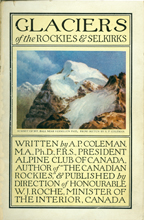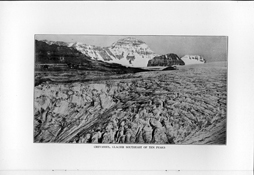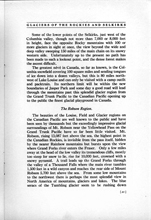… The granite and gneiss of the western Selkirks are very ancient eruptive rocks, highly crystalline and formed below the surface. It is rather remarkable that there are very few undoubted eruptive rocks farther east and none along the railway. In the Gold Range to the west there were volcanic eruptions with lava sheets and thick beds of ashes after the Selkirks had been elevated and there are important areas in the southern Selkirks, toward the boundary.
As the Selkirks are a very old range, far older than the Rockies, they have undergone more destruction, and the great glaciers of the Ice Age had much to do with the moulding of the slopes and valleys, and the carving of the beautiful lake basins.
A.P. Coleman, 1911,“A Note on the Geology of the Selkirk Mountains.” Canadian Alpine Journal 3: 119– 120






